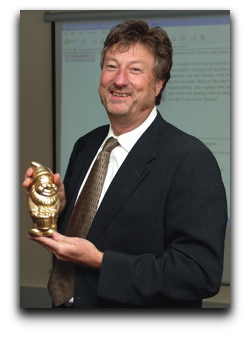Through the Fire a Disaster Dowunder eSim
 [dropcap]O[/dropcap]ne of the most memorable initiatives of my time here at Adelaide commenced with coffee. Sheila Kavanagh OAM, then a lecturer from the Discipline of Nursing and now the President of the Australia NZ Burns Association began to share her passion to never again have burns nurses experience a disaster without adequate planning. This was learnt from the lack of planning that was a huge obstacle in 2002 when the Bali Disaster killed 202 people with a further 240 injured, many with significant burns. Quickly we brainstormed the question: What is the best way to train people for such an emergency? At the time I was collaborating online with Dr Randall Kindley from the USA and exploring Scenario Based Learning. Randall was a pioneer in this new form of instructional design and offered to help Sheila and I develop an experience to immerse burns nurses in the disaster planning for burns patient care.
[dropcap]O[/dropcap]ne of the most memorable initiatives of my time here at Adelaide commenced with coffee. Sheila Kavanagh OAM, then a lecturer from the Discipline of Nursing and now the President of the Australia NZ Burns Association began to share her passion to never again have burns nurses experience a disaster without adequate planning. This was learnt from the lack of planning that was a huge obstacle in 2002 when the Bali Disaster killed 202 people with a further 240 injured, many with significant burns. Quickly we brainstormed the question: What is the best way to train people for such an emergency? At the time I was collaborating online with Dr Randall Kindley from the USA and exploring Scenario Based Learning. Randall was a pioneer in this new form of instructional design and offered to help Sheila and I develop an experience to immerse burns nurses in the disaster planning for burns patient care.
We interrupt this program!
We commenced the planning sessions in the Discipline of Nursing and I was the sounding board, facilitator, and learning designer. Sheila was the subject matter expert and we spent many hours developing scenarios as this immersive learning experience took shape. It was truly authentic curriculum development and at times we needed breaks to release the adrenaline building up as Sheila re-lived Bali, where she was awarded the Order of Australia medal for her nursing work. One highlight was when I “sold” Channel Nine the idea of providing free of charge video clips of simulated newsbreaks, so realistic they had to be labeled “training purposes” to avoid the problem “War of the Worlds” had in 1938.
Randall Kindley Visit and a University Wide Situational Learning initiative
The success of both eSims made it possible for me to organize the visit to Adelaide of Dr. Randall Kindley to teach Scenario-based Learning
it possible for me to organize the visit to Adelaide of Dr. Randall Kindley to teach Scenario-based Learning
to a wide audience from all three educational sectors K-12, VET and HE. This subsequently led to a successful application for $100,000 in joint funding for situational learning from the University’s Learning and Teaching Development Grant Scheme and the Faculty of Engineering, Computing and Mathematical Sciences.
This funded an initiative to develop an online situational learning cluster across the University and to promote further online role-play simulations and scenario-based learning. Meanwhile the Situational Learning team from here and the USA were presenting on the subject nationally and internationally.
Dr Randall Kindley died unexpectedly from a heart attack in May 2006. The Online Learning Team in the CLPD have missed him and his creative energy a great deal.
Authentic Lesson Design
Ms Jill Clausen, Clinical Lecturer from the School of Nursing, who currently runs the eSim, reports it has now run seven times since 2004, with 85 students immersed in it. Jill reports that student comments have always been positive. However, the best feedback came from Margaret Conaglen, a Christchurch student who was doing the eSim when an earthquake hit in 2010:
 “We have lost a home but all my family is fine and we are counting our blessings. I wanted to let you know how often I thought about the “Disaster Down Under eSim” and how incredibly relevant it has been to the situation here at the hospital over the past week. Just about everything covered in the eSim played out here – including rapid patient transfers, mis-communication, gaining extra dressing supplies, sneaky media and staff burn out avoidance. The only difference of course was no burn injuries – just lots of trauma. I have to say our hospital did an amazing job and our ward coped very well.”
“We have lost a home but all my family is fine and we are counting our blessings. I wanted to let you know how often I thought about the “Disaster Down Under eSim” and how incredibly relevant it has been to the situation here at the hospital over the past week. Just about everything covered in the eSim played out here – including rapid patient transfers, mis-communication, gaining extra dressing supplies, sneaky media and staff burn out avoidance. The only difference of course was no burn injuries – just lots of trauma. I have to say our hospital did an amazing job and our ward coped very well.”
Margaret Conaglen[/cs_text][/cs_column][/cs_row][/cs_section]

